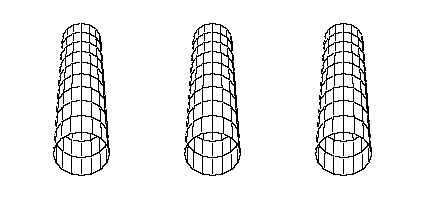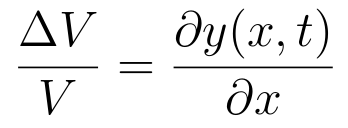- Solid rod behaves itself somewhat different that the bulk material -
it can bulge when sound propagates in it. Its compression properties
are described by Young modulus Y instead of bulk modulus B .
Y also has unit of pressure, Pa
- sound speed along the length of the solid rod is
v = (Y/ρ)½
- Just get the right modulus for the problem !
- For the same solid material Young and bulk moduli
are typically of the same order, but which one is larger depends
on material (see Table 11.1 in the textbook)
|

|







